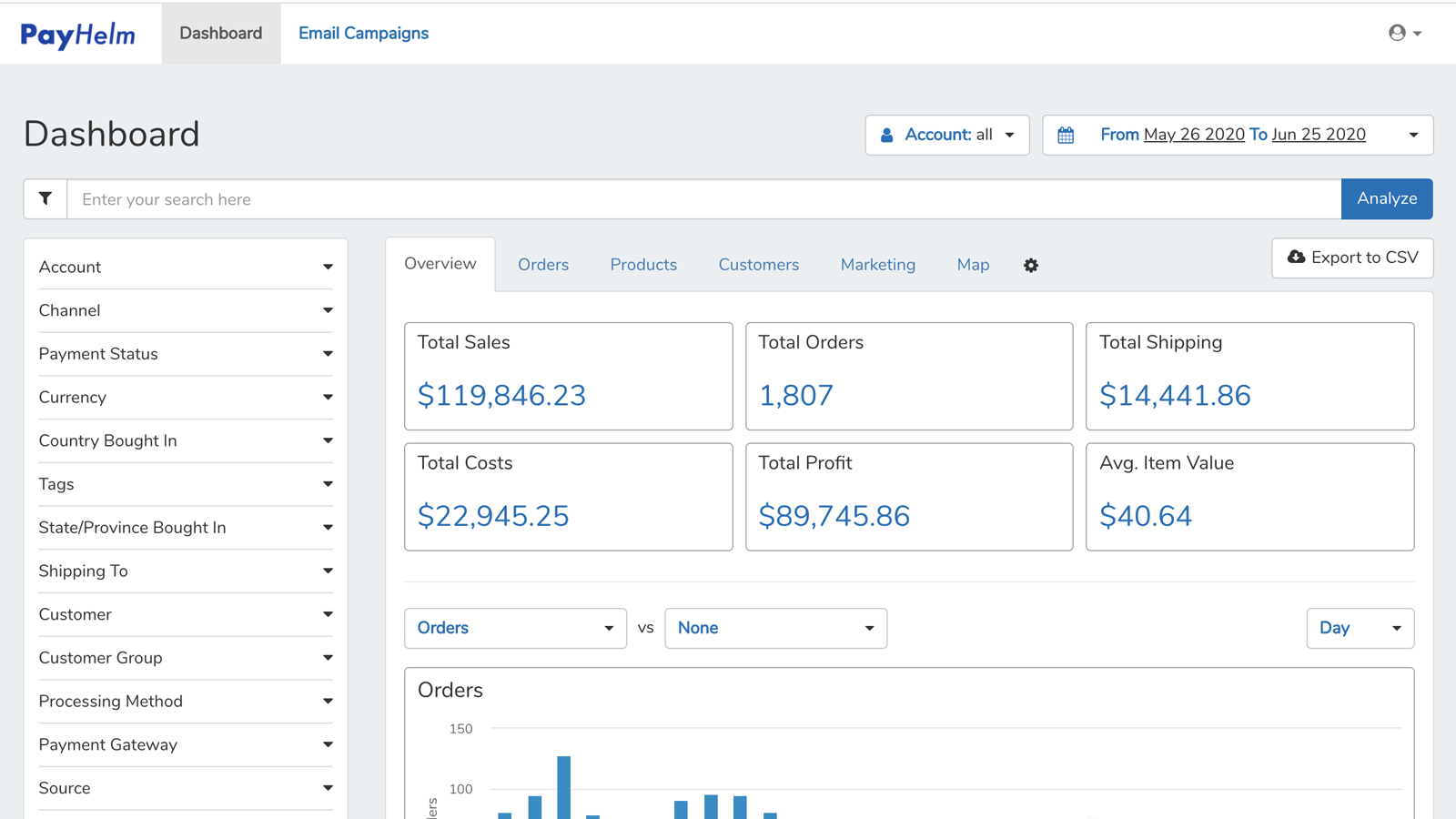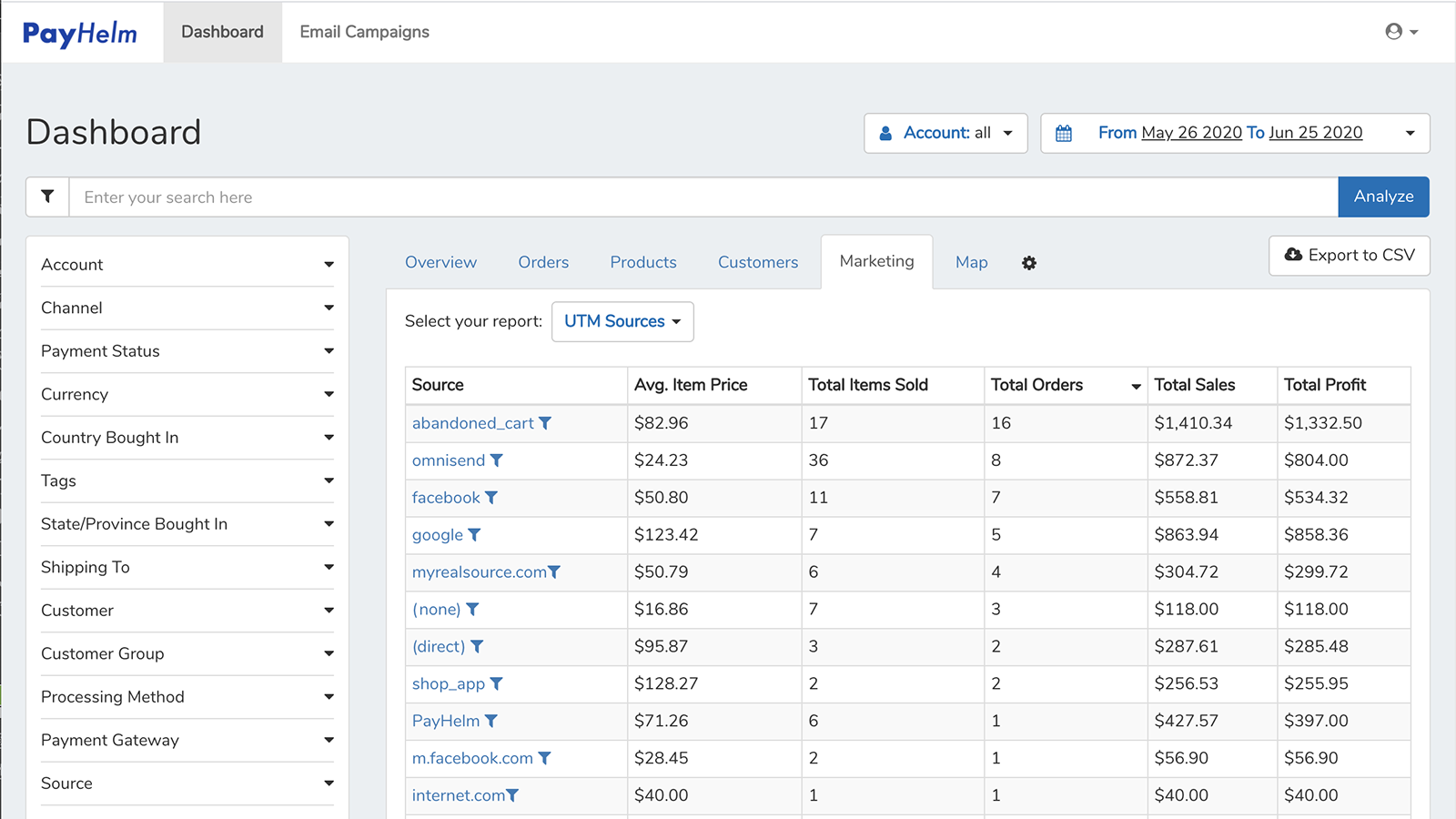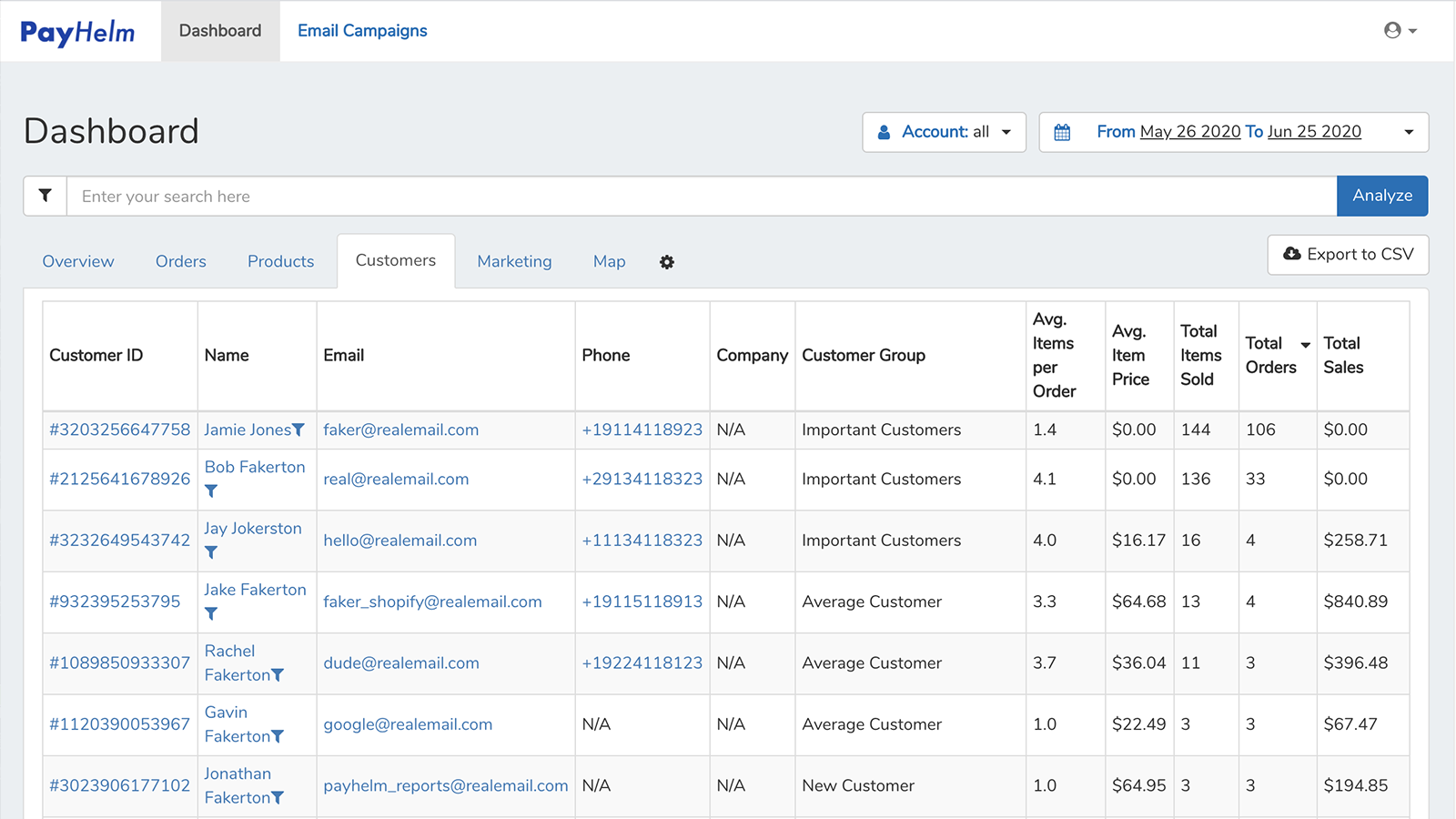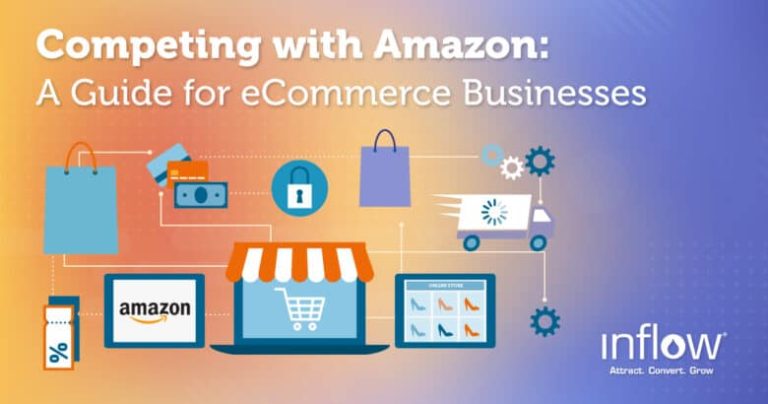How can you expect to achieve results if you don’t know how you are performing at present?
How can you make sales if you’re simply having a stab in the dark whenever you try a new ecommerce marketing technique?
Good strategies require careful pre-planning. Good businesses learn from previous efforts and test future ideas to ensure a brighter future.
All of this comes down to one thing: ecommerce analytics. Analytics enable you to delve deep into the facts and figures, historical business data, and future forecasting so that you can make the most intelligent decisions for your business.
What is Ecommerce Analytics?
Ecommerce analytics is the process of accumulating data from all of the areas that have an impact on your store. You should then use this data so that you can comprehend shifts in customer behavior and online shopping trends.
Ultimately, you can make more intelligent decisions by basing them on data, which should result in more online sales being made.
Ecommerce analytics can include a wide range of metrics relating to the full customer journey, such as discovery, acquisition, conversion, retention and advocacy.

Source: PayHelm for BigCommerce
Types of Ecommerce Analytics
As mentioned, there are a number of different types of ecommerce analytics that you can use to inform your marketing strategy and ensure you are one step ahead of the competition. So, let’s take a look at some of the most popular types in further detail.
1. Audience
There is only one place to begin, and this is with data analytics that pertains to your audience. This will give you in-depth insights regarding the demographics of your audience, i.e. their gender, age, income, occupation, where they are based and what language they speak.
In addition to this, audience data should inform you of the different devices that your audience is using. Do they mainly access your store from their mobile phone or desktop? If it is the former, do they tend to use Android or Apple devices? This can give you great insights into how your online store is being accessed so that you can target your efforts accordingly.
Audience data gives ecommerce company owners the ability to alter how they conduct their shipping options and how they advertise based on the locations of their audience.
You are also going to have the ability to rethink the different topics you are covering and how your marketing content is being displayed on devices. This is where the types of technology being used and data regarding your audience’s sessions come in handy.
2. Acquisition
Another type of ecommerce analytics that you can use to power your business forward is data relating to the acquisition of customers. This is highly valuable because you will learn about how your visitors found you online and how they ended up on your website to begin with.
When using acquisition data, you will discover more about the sort of online marketing channels that are bringing the most visitors to your website. You will also learn what channels are driving the greatest sales or conversions.
You can also see first-hand which online marketing channels are bringing success — and which ones aren’t quite working.
- Do most of your visitors come from social media posts?
- How many website visitors are you bringing in from email campaigns?
- What does the conversion rate look like for your blog posts?
- Do paid ads bring in most of your audience?
This data will prove pivotal in helping you to understand which marketing channels are the most profitable to your business so that you can determine where you should be focusing your resources.
“PayHelm has been invaluable in researching various data points in our day to day operations as well as sales performance. In addition, we are now able to more accurately tailor a compensation program for our sales associates” — Dan Pritcher, Co-owner, Eagle Mountain
3. Behavior
Another type of data you should be looking at is information on your consumers’ behavior. Once people land on your website, how do they behave?
- What products do customers end up buying?
- How many viewers end up leaving your website straight away rather than exploring?
- What page do people click on first?
- What marketing content do viewers click on?
- Which products generate a lot of interest but very few sales?
- How long do viewers spend on your website on average?
These sorts of questions can help you to understand how your website is being used at the moment, so you can get a handle on the typical journey people embark on when interacting with your online store.
If you find that most visitors do not scroll through your inventory or that they quickly leave your page, you need to look into the page load times for your website. Could it be that your site is not loading quickly enough?
If users leave a page quickly, this indicates that they have not found what they are looking for. This could mean that your business type is not what they were expecting, and so there could be an issue with the keywords you are targeting in your marketing campaigns. Alternatively, it may mean that the content you are producing is simply too confusing.
All in all, behavior analytics are going to enable you to discover the parts of your store that you can enhance in order to boost your engagement rates and conversion level.
4. Conversions
We have mentioned conversions quite a few times now, and this is another type of analytic you can use to power your business forward.
- When do online users convert into actual customers?
- How do online users convert into actual customers?
These are the two questions you are looking at when it comes to conversion analytics. When putting together your marketing strategy, you simply cannot ignore this part of it.
When you start delving deeper, there are many different things that you can find out.
- How long does it take a typical user to convert into a paying customer?
- Do customers tend to convert once a year or at multiple times?
- Do customers tend to buy items after one visit to your e-store or do they need to make several visits before they buy?
- Do customers tend to make repeat purchases?
- How many customers abandon their shopping cart rather than converting?
Knowing the specifics like this can help to impact your marketing messaging, so you can determine how to effectively engage with users and potential customers.
It is also important that you are aware of factors such as the average revenue your store receivers per every transaction. Plus, what is the average number of items that your customers buy in one transaction?
This data is important because it helps you to plot what sort of discounts and deals will most appeal to your current crop of customers.
“When we came to BigCommerce, we quickly realized that crucial data we needed to see on a daily basis just wasn’t there, or wasn’t there in an easily usable or accessible format. For us, we needed to see daily sales volume on the fly, but also have the ability to drill down and see product and order details and make sensible comparisons. With PayHelm, we can find almost any piece of data we’re looking for and export robust reports that tell us what we need to know to make the best decisions for marketing and procurement.” — Tad Roberts, Co-Owner & President, RC Hobby Explosion
5. Paid Marketing Activities
In addition to the four analytics we have mentioned so far, another key area to consider is your paid marketing activities. This will help you to figure out your exact return on investment (ROI) for various paid marketing campaigns.
- How much revenue have you generated from your social media adverts?
- Have you earned more revenue than what you spent on creating the ads and promoting them?
- How much revenue have you generated as a consequence of your pay-per-click ads?
- What about your email marketing campaigns?
If you do not assess your current paid marketing campaigns, you will only end up spending money on marketing efforts that are not helping your bottom line.


Source: PayHelm for BigCommerce
Why Do Analytics Matter for Your Ecommerce Store?
Now that you know what ecommerce analytics are, it is important to establish why they matter! Analytics are critical because they enable you to make more informed decisions that generate the best possible results for your e-store. To illustrate this effectively, we are going to take a look at some of the main benefits of analytics for ecommerce in further depth.
5 Benefits of Analytics for Ecommerce
1. Measure the effectiveness of your marketing and sales campaigns
Data analytics can assist ecommerce companies in measuring how successful their marketing campaigns are, as well as improving decision-making, gaining more omnichannel traction, and informing holistic marketing programs.


Source: PayHelm for BigCommerce
2. Evaluate the trends or patterns in data so you can forecast accurately
Ecommerce analytics give you the power to get a better understanding of how your business is performing now and how it is likely to perform in the future. This forecasting will inform everything from hiring goals and sales goals to making sure that the right products are accessible at the right time so that your customers’ expectations are met.
3. Optimize pricing, up-sell and inventory performance
With ecommerce analytics, you are going to be able to benefit from a granular picture of what drives pricing for every consumer segment. You can use this insight so that you are able to discover the best price points at the product level, rather than category level, so you can earn optimal revenue.
4. Use customer data to personalize individual experiences
Understanding how customers interact with your business is imperative to inform what sort of formats, content and channels appeal to and resonate with your target demographics. You can use ecommerce data analytics to help optimally position your products and improve the purchasing journey for all of your customers.
5. Inform your strategy with data-driven insights
Another benefit that is associated with ecommerce analytics is that you will be able to inform your strategy by using data analytics. This will give you great insight into what is happening within your business and the industry as a whole so you can figure out some vital market trends and possible risks that you need to mitigate.
Difference Between Metrics, KPIs, Analytics and Reporting
A lot of people tend to use these terms interchangeably, yet they are all different from one another. The key to a successful ecommerce business is being able to use all four in harmony so that you can drive the best results.
To do this, you need to understand what each one means, so let’s take a look:
- Metrics – A metric is a standard of measurement. For example, your bounce rate could be a metric.
- Reports – A report will summarize both past and current data. It deals with what happened.
- KPI – KPI stands for key performance indicator. KPIs are used for the purpose of measuring degrees of success by comparing actual data to forecasted data. This is why something happened.
- Analytics – Analytics tend to be used to predict performance in the future. How can we improve?
Ecommerce Analytics Best Practices
Now that you have a good understanding of how beneficial ecommerce analytics can be to your business, you will want to make sure that you implement this properly so that you can bring success to your company. So, how can you do this?
1. Gather all of your marketing data that is scattered across all platforms and channels
It can be a bit of a messy starting point, as most businesses will have data spread across various different mediums. However, you need to bring all of your data together so that it can be organized.
You may feel overwhelmed. It’s normal. Make a list of where you believe all of your data to be. Here are some examples of where you may find important information:
- Your BigCommerce store
- Email providers
- Customer relationship management platforms
- Google Analytics Enhanced ecommerce data
- Outbrain
- Google Ads
- Facebook Ads
The list goes on and on, and it is individual to every company. However, the good news is that this data can be consolidated in a quick and easy manner. By using a pre-built data connector, you will be able to pull data from any source directly into Excel or Google Sheets. You don’t have to handle this process manually, which makes a huge difference.
2. Join the dots between your customers and the numbers
Don’t fall into the trap of simply gathering data because you feel like you have to. There needs to be a purpose. Simply looking at a sheet with numbers on it is not going to get you anywhere. However, when you correlate these figures with your customers, this is where the magic happens.
Marketing tools provide an excessive amount of data, but they have not been created for cross-channel reporting. If you just look at the data in isolation, though, you won’t be able to see the full picture. This is when errors and wrong decisions are made.
As your marketing stack gets bigger, all of your data being in one place will ensure you can establish a clear picture of the behavior of your users so that you can find areas for improvement.
3. Adjust data for seasonality and other trends
This may sound basic, but there are a lot of online stores that completely forget to temper their analytics against major industry events, trends, seasonality, or any other changes that are happening with the competition.
The key to this approach is making sure you do not only concentrate on what is happening at this present moment in SEO. This is because there is a long game to be played with SEO. As a consequence, you can paint in very little of the big picture if you only focus on micro-moments in the data.
4. Keep a close watch over your site’s shopping behavior flow
There are a number of key areas that you can monitor in this regard, including sessions with transactions, sessions with checkout, and sessions with add to cart.
If you notice that there is a sudden reduction in flow, this indicates that there is a problem with your checkout process and possibly you also have some issues with the speed of your website. So, analysis and monitoring of this flow are critical.
5. Track your product categories and individual products over time
Looking at granular product data is important for both your marketing and sales tracking efforts. Tracking your product category and individual product performance over time is going to enable you to discover what your biggest revenue drivers are. This is a great place to begin if you want to find out what products are performing well and which items are not performing as effectively as you expected them to.
Looking at the sales performance for all of your products within a specific category enables you to dive deeper. Look for the best-performing items that have the highest quantity purchased, highest revenue, and unique purchases so you can determine what your customers are really interested in and which products need a bit more love.
Wrapping Up
So there you have it: everything you need to know about ecommerce analytics and why they are so important for your business.
By using data, you can make more intelligent decisions that will drive your company forward and, ultimately, improve your bottom line.
This is the only way for you to determine what areas of your business are performing well and what areas require changes and improvements. If you don’t measure it, you can’t improve it.
![]()
![]()






